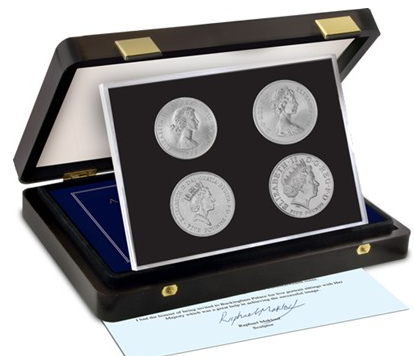Posts by Ian
Kate Gives Birth to a Collecting Frenzy
Managing Director, Ian Glen, helps you pick through the Royal Baby commemorative jungle.
It’s 9.57 am. Less than 24 hours after the Duke and Duchess of Cambridge have been blessed with a new baby boy and a nation with its future King.
The Prince has not even been given a name yet but already there is a vast array of commemorative memorabilia.
One of our most important jobs is to select for you the very best commemorative issues that will mark the birth our future King in the most appropriate way and create a lasting heirloom that you can pass down to your children and grandchildren.
But which of the hundreds of commemorative pieces will stand the test of time?
Well let me share with you some of the elements that I believe are most important when we select the pieces we recommend to collectors.
1. Capture a moment in time
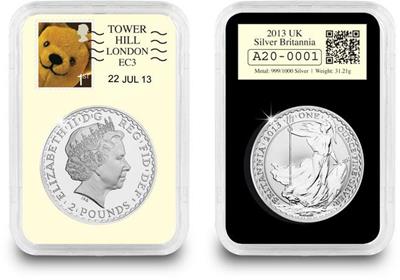
The Official Royal Mail Postmark captures the moment in time forever as with this DateStamp (TM) coin.
When there is a momentous occasion like a Royal Birth, I’m always keen to tie commemorative items back to that moment forever, which is why in my mind stamps create such a perfect collectable.
For example, we arranged well in advance for Royal Mail to hold a number of covers and other philatelic items ready for them to postmark with the all-important birth-date, as soon as it was announced.
These are true never-to-be repeated commemoratives, unlike so many items that will be manufactured for months after the birth.
2. History and heritage
.jpg)
The Gold-plated Commemorative features a timeless heraldic design and draws on hundreds of years of minting heritage.
By specialising in coins and stamps, we have already declared our hand that the best collectable items have a strong history and heritage. Coins, commemorative medals and stamps, of course, have long traditions as Royal Commemoratives and so make the perfect keepsake.
With much issuing information not yet in the public domain, you can also realistically expect British Isles issues, as well as coins and stamps from many key commonwealth countries to be announced over the coming days and weeks.
As always, the closer the links to the UK, typically the stronger the longterm heritage of the piece. And with a Christening some way off, I’m certain we have many important issues still to come.
3. Designed to stand the test of time
A commemorative piece should always be designed to create an enduring memory – something that you can pass down through the generations.
It is no coincidence that many of the most popular coins to be issued over the years feature heraldic representations. Rushed and imagined sketchy pictures of the Royal Couple and baby, bear little creative strength and over time risk looking tired and clichéd.
It’s also worth searching out something a little bit unusual – even unique – in the design, which is why I was delighted when we were able to select a silver commemorative design that actually contains the new Prince’s birthstone – a ruby – as an integral part of the design.
4. Edition limits that mean something
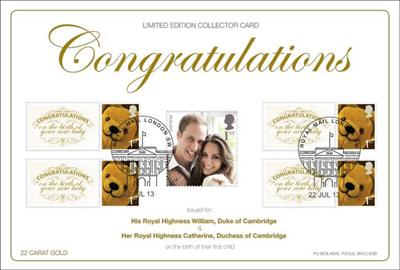
Just 2,000 22 Carat Gold Collector Cards have been issued. With an edition of just 2,000, they are tipped to be among the earliest sell outs.
Of course, many Royal Baby commemoratives will be issued in limited editions – but that is only of real importance if demand is actually going to exceed supply, resulting in collectors missing out.
Of course, there is no hard and fast rule but I like to ensure that we work hard to select commemoratives with edition limits that should see sell-outs, helping to ensure their long-term collectability.
Finally, there is just one other thing to add. Enjoy your collecting.
By owning a Royal Commemorative, you are ensuring that not only you, but also your children and grandchildren, will forever have an element of connection to the moment when a nation celebrated the birth of its future King.
 click here to view our full Royal Baby Commemorative Range
click here to view our full Royal Baby Commemorative Range
Portraits of a Queen – which portrait proved most popular?
A couple of weeks ago we asked you to vote for the Royal Portrait you liked the most.
If you were wondering what the results were, take a quick look at the “videographic” below…
You can own all four Portraits on original UK Crowns.
Click here for more info about the Portraits of the Queen 4-coin set
Portraits of a Queen – the changing face of Britain’s coinage
Discover a little of the history behind the Queen’s effigy and vote for your favourite portrait.
As well as the 60th Coronation Anniversary, 2013 marks the 60th Anniversary of the Queen’s coinage.
The first Queen Elizabeth II coins were struck in 1953 and since then four different effigies adorned our coins.

1953 – 1967: Mary Gillick
The first coins of Queen Elizabeth’s reign bore Mary Gillick’s portrait of the young Queen, engraved especially for the new coins.
Her uncrowned portrait of the Queen is still used on the Maundy Money distributed each year by Her Majesty.
With the upcoming decimilisation, it was decided to refresh the Queen’s portrait with Arnold Machin’s new sculpture of the Queen. Commissioned in 1964, it first appeared in 1968 on the new 5p and 10p coins. A version of the design with tiara was also introduced on stamps in 1967 and remains to this day.
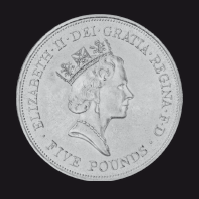
1985 – 1997: Raphael Maklouf
In creating his new effigy of Her Majesty, Raphael Maklouf aimed “to create a symbol, regal and ageless”.
His “couped” portrait depicts Queen Elizabeth II wearing the royal diadem favoured by her on the way to and from the State Opening of Parliament.
 1998 – current: Ian Rank-Broadley FRBS
1998 – current: Ian Rank-Broadley FRBS
The current Queen’s head on our coinage was designed in 1997 by Ian Rank-Broadley. Created to fill the full circle of the coin, its larger size was a deliberate response to the smaller 5p and 10p coins in circulation. A noticeably more mature portrayal of Her Majesty, Rank-Broadley aimed to show the Queen with “poise and bearing”.
You can own all four Portraits on original UK Crowns.
Click here for more info about the Portraits of the Queen 4-coin set

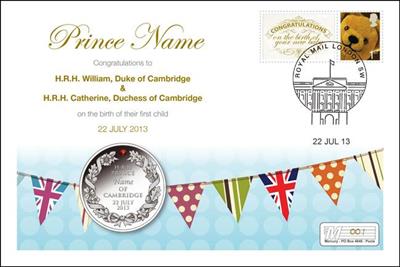
.jpg)


